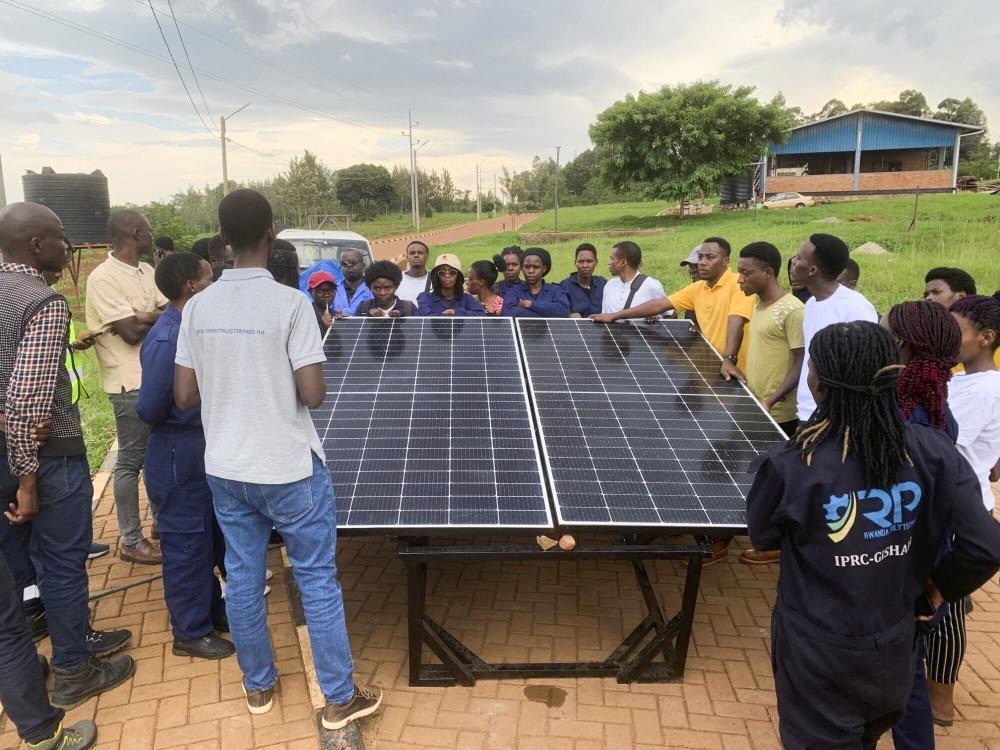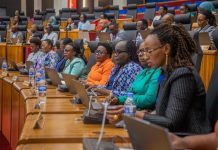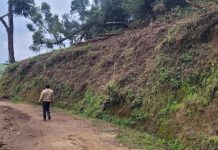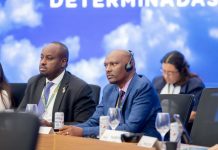Africa-Press – Rwanda. The government has proposed to reduce greenhouse gas emissions by 53% in 2035 as a new target that is set to be submitted to cabinet for approval, The New Times has learnt
The initial target was to reduce greenhouse gas emissions by 38%, equivalent to 4.6 million tonnes by 2030.
The new target is to reduce greenhouse gas emissions by 53%, which is equivalent to 14.86 million tonnes.
Thadée Twagirimana, Acting Director General for Environment and Climate Change at the Ministry of Environment, said the target is part of the revised national climate pledges known as Nationally Determined Contributions (NDCs), which will be launched during the 30th United Nations Conference on Climate Change, known as COP30, to be held in Belém, Brazil, from November 10 to 21 2025.
The revised NDCs are dubbed “NDC 3.0”, or version three.
NDCs, established under the Paris Agreement to limit global warming to 1.5 degrees Celsius, embody efforts by each country to reduce its emissions and adapt to the impacts of climate change.
However, NDCs to date fall well short of what is needed to avert increasingly dangerous climate impacts and hold global temperature rise to 1.5 degrees. Countries have to update their NDCs by 2025.
Among Rwanda’s six priorities to be pushed at COP30 are mitigation measures.
“Under Rwanda’s NDC 3.0, the country is committed to a 53% reduction in emissions by 2035, equivalent to the mitigation of 14.86 million tonnes of carbon emissions. To achieve this target, there is a need for domestic and international financial support,” Twagirimana noted.
The Paris Agreement requires each party to prepare and maintain successive NDCs every five years.
Rwanda submitted its first intended NDC, outlining initial climate commitments in 2015.
Rwanda presented an updated NDC 2.0 in 2020, extending commitments through 2030.
Rwanda has prepared NDC 3.0, updating the previous 2020 NDC 2.0, targeting commitments up to 2035.
Financing the transition
According to the Rwanda Environment Management Authority (REMA), the country committed to use its own resources or finance equivalent to 7%, while external financial or technical support will contribute 46% in order to achieve the 53% reduction target.
The government needs $12 billion for the implementation of NDC 3.0 by 2035. At least $7 billion is needed from 2025 to 2030 and $5 billion from 2030 to 2035 to reduce carbon emissions and build climate resilience to extreme weather events.
Before revising the target, $11 billion was needed from 2020 to 2030. Rwanda’s mitigation measures will focus on renewable energy, energy efficiency, and cleaner transport to reduce emissions.
The Industrial Processes and Product Use sector aims to cut emissions by substituting powerful greenhouse gases and improving industrial processes.
The agriculture sector will reduce emissions through better livestock management, soil practices, and manure management, while the waste sector will mitigate emissions by improving waste treatment and converting waste into energy.
The forestry sector focuses on sustainable management, afforestation, and agroforestry to enhance carbon sequestration, improve biodiversity, and mitigate climate change.
The adaptation measures include accelerating water management through land restoration, flood protection, improved irrigation, and enhanced water quality monitoring.
The measures will also ensure universal, climate-resilient water and sanitation services with solar-powered treatment and flood-proofed infrastructure.
Promoting climate-resilient seeds, livestock, irrigation, soil conservation, and insurance to build a sustainable agri-food system are part of the measures.
The adaptation measures will implement hazard-informed land use, restore forests, and expand agroforestry to reduce floods and sustain ecosystems.
Upgrading informal settlements with resilient planning, storm water systems, and green/blue infrastructure; promoting climate-compatible mining practices and rehabilitating sites to enhance resilience and biodiversity, strengthening climate-proof health services, early warning, and surveillance to reduce disease, maternal mortality, and NCDs are among the measures to adapt to climate change.
Climate-proofing road networks and expanding public transport for safer, resilient, and low-carbon mobility; establishing multi-hazard early warning systems and district climate hubs; and mainstreaming adaptation across all sectors have been integrated.
Augustin Munyaneza, Director for Policy Analysis and Advocacy at the Local Government Authorities Association (RALGA), said there is a need to empower local governments to contribute meaningfully to Rwanda’s national and global climate action.
“There is a need for providing space to stocktake further inputs and the voice of Rwandan climate actors in the global climate agenda setting in light of the forthcoming COP30 in Brazil,” he noted.
During consultations with local government stakeholders on Rwanda’s updated Climate Action Plan, Meembo Changula, Senior Professional Officer in charge of Urban Planning at the International Council for Local Environmental Initiatives (ICLEI), said it appreciates working with Rwanda to advance climate action, recognising local governments as key drivers of implementation.
Rwanda’s priorities at COP30
At least 199 parties (198 states plus the EU) that are party to the United Nations Framework Convention on Climate Change (UNFCCC) will be gathered at COP30 in Brazil.
The summit will push countries to strengthen their Nationally Determined Contributions (NDCs) and accelerate progress towards the Paris Agreement targets.
COP30 will advance discussions on climate finance, including the New Collective Quantified Goal (NCQG), and operationalise mechanisms like the Loss and Damage Fund.
According to REMA, COP30 provides a platform to strengthen existing partnerships and create new ones to support Rwanda’s transition to a climate-resilient, low-carbon economy.
“Rwanda will ensure its priorities and needs are reflected in international climate decisions, especially as part of the African Group, LDCs, and G77 and China group negotiators.”
At COP30, Rwanda will use its platform to diversify and deepen climate finance partnerships, aligned with its national strategies which guide efforts to mobilise innovative, inclusive, and long-term financing solutions.
The country will also be engaging with networks to strategically connect with development partners and investors interested in partnering with Rwanda.
Showcasing the Ireme Invest and Intego portfolios is expected, with the aim of mobilising additional financing from new partners.
The country will also launch the Biodiversity Finance Initiative, which requires close to Rwf400 billion in finance to support nature-positive investment opportunities.
According to Twagirimana, Rwanda’s priorities at COP will include climate finance, carbon markets, adaptation and mitigation, and the operationalisation of the Loss and Damage Fund.
Rwanda advocates for a post-2025 global finance target to mobilise at least $1.3 trillion per year in climate finance for developing countries by 2035, and a clear roadmap for delivering $300 billion every year, approved at COP29.
For More News And Analysis About Rwanda Follow Africa-Press






